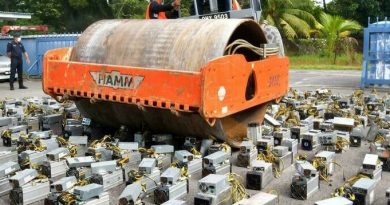World Toilet Day: 5 Amazing facts from India
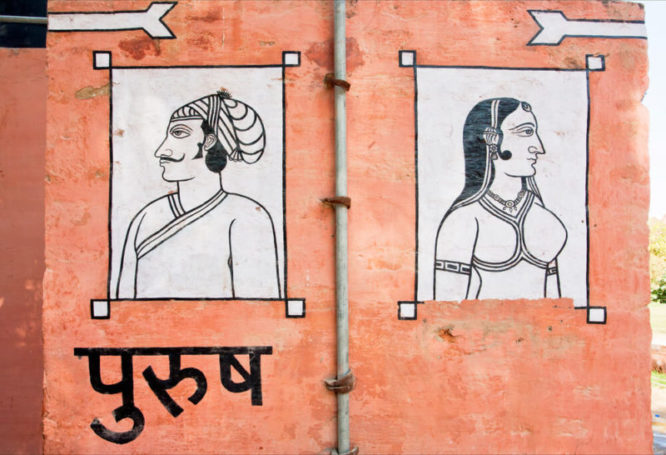
As another World Toilet Day comes over, its time to look at just the sheer scale of the progress India has made on this key issue. Billions of people around the world don’t have access to clean and hygienic sanitation even today. This means that human faeces, on a massive scale, is not being captured or treated and in turn contaminating both our water and land. Turning our environment into an open sewer. Building toilets and sanitation systems that work in harmony with ecosystems has become the growing need of the hour. India’s Swachh Bharat Mission set out to do just that, and 4 years later, it has logged some impressive numbers. It was a brave Prime Minister who exhorted the country to move towards a clean India in his first Independence Day speech, surprising observers and listeners alike, but he probably knew the reality and the urgency of action better than most.
The Swachh Bharat Mission under its two sub-missions – Swachh Bharat Abhiyan (Gramin or rural), which operates under the Ministry of Drinking Water and Sanitation; and Swachh Bharat Abhiyan (Urban), which operates under the Ministry of Housing and Urban Affairs a significant impact has been made.
On world toilet day, we take a look at 5 interesting Swachh Bharat facts:
A. 8.8 Crore Household Toilets Constructed (Gramin/Rural)
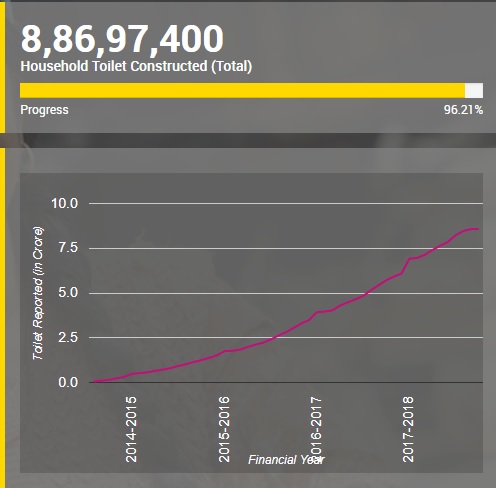
According to the Ministry of Drinking Water and Sanitation, official figures as of today indicate that under the Gramin mission more than 8 crore household toilets have been constructed in India since the inception of the mission back in October 2014. According to targets set out by the government at the time of inception, the mission has almost reached its target number, with around 96% completion.
B. 25 Open Defecation Free States/UTs
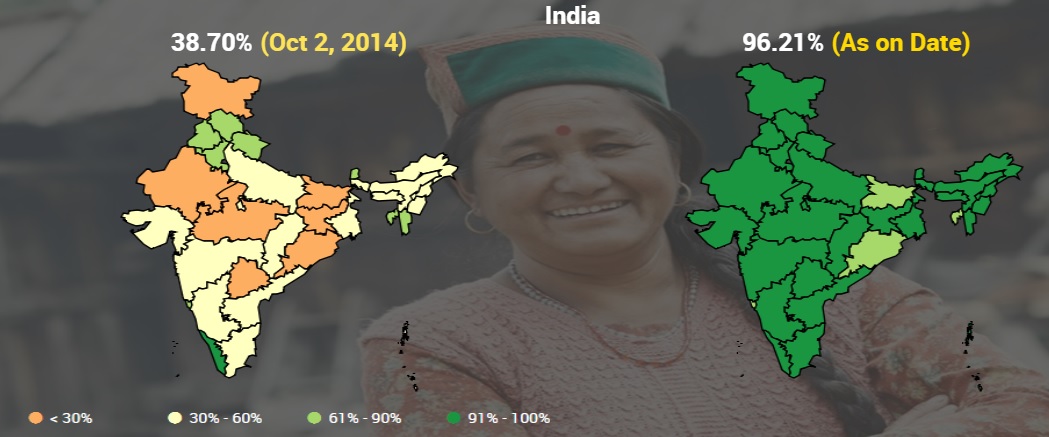
In the four years of operation, the number of states and UTs in the country that were open defecation free (ODF) has increased from 1 (Kerala,2014) to 25 today. That accounts for 530 ODF districts, and over 5.2 lakh open defecation free villages. The four states/UTs that are yet to be declared ODF are Odisha (with a 71% progress on all households having toilets), Goa (76%), Bihar (82%) and Tripura (89 %).
C. 50 Lakh Individual and Household Toilets Constructed (Urban)
According to the official figures presented by the Ministry of Housing and Urban Affairs, around 50 lakh individual household toilets and 4 lakh community and public toilet seats have been constructed. The target set under the mission is construction of 66.42 lakh individual household toilets and 2.52 lakh and 2.56 lakh community and public toilet seats respectively. 3,357 urban cities have now been certified as open defecation free.
D. Only 40 percent of the Faecal Waste is being treated
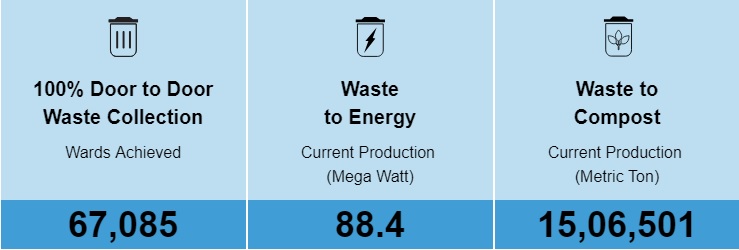
Currently, only 40 percent of the faecal waste is being treated and the remaining go into the septic tank. “Treatment of faecal waste is a challenge due to the lack of a sewage connection system. So, now we are insisting that the States should have a mandatory faecal treatment plant and only on the basis of it can they come into Open Defecation Free (ODF) plus plus category,” said VK Jindal, Joint Secretary, Swachh Bharat Mission.
E. Household Sanitation Coverage Increased by 13% Annually (2016-2018)
Household sanitation coverage in India over the last two years increased at a rate of 13%, according to the World Health Organisation. Everyone should have access to safe sanitation facilities including hygienic toilets that are connected to quality sewage systems, WHO said, adding that for many people in its South-East Asia region, as across the world, access to these services remains a problem. Amidst all this, WHO praised India’s Swachh Bharat campaign as a good example of how with rapid effect and a large scale implementation this problem can be solved.
Image Credits: Ministry of Housing and Urban Affairs. Ministry of Sanitation



